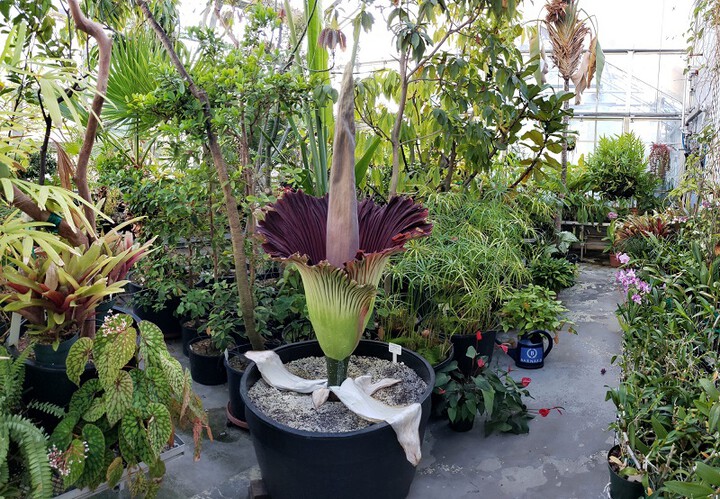The five-foot-tall flower gets a little stinky once it blooms.

Even though school may not be in session, the gardeners at the Arthur Ross Greenhouse at Barnard College in New York City are still actively working to exercise their green thumb. Recently, a rare and endangered corpse flower (Amorphophallus titanium) bloomed in the campus greenhouse after years of being nurtured. The corpse flower, affectionately nicknamed "Berani," has been growing for seven years on the campus (Martha's alma mater!), but it didn't start to bloom until April 2020.
"Our brave Barnard 'Berani' has chosen to bloom during an unprecedented time of anxiety, sorrow, isolation, and social distancing. Fortunately, we were always planning to augment in-person experiences with online tools so that Barnard students who are away from campus in summer could enjoy the event," said Hilary Callahan, the greenhouse director and Ann Whitney Olin Professor of Biological Sciences.
The corpse flower, which hails from Sumatra, Indonesia, is notoriously smelly once it blooms. It's aptly named; some say that it smells, well, like a corpse when. But greenhouse administrator Nick Gershberg told Mental Floss that it really smells like dead fish, Camembert cheese that has been left out overnight, and the odor of slightly decayed lilies. Are you intrigued yet?
What started as a plant the size of a potato has grown to nearly five feet, rising four to six inches each day as it bloomed. This species is noted for being the tallest unbranched inflorescence. Gershberg confirmed that that the flower reached its peak on May 31st, at which point it measured 72 inches tall and 44 inches wide. The flower only stays in full bloom for about 48 hours, then starts to wilt. Experts at the Arthur Ross Greenhouse are currently planning ways to preserve the flower's petals. After the roots die, Gershberg says that they will replant the tuber, which will begin the re-growth process within three to six months.